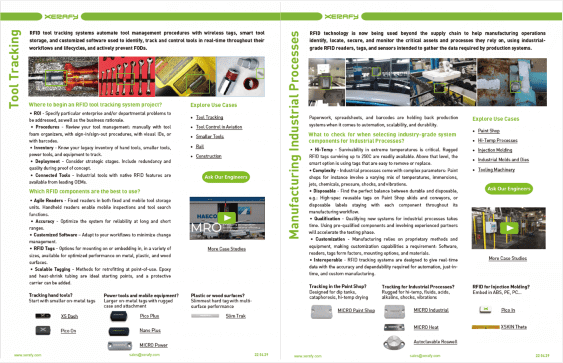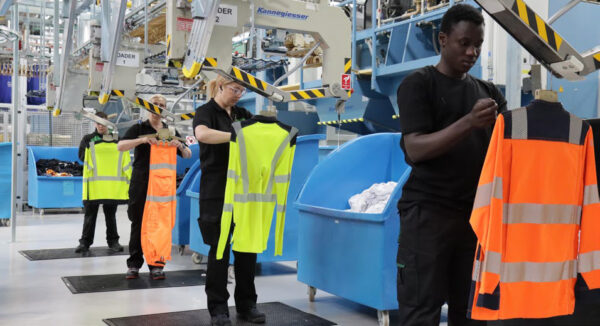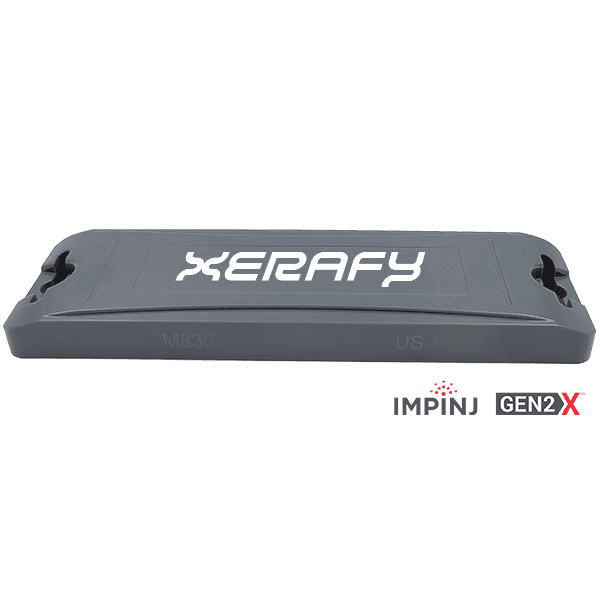Before an officer of the Richardson (Texas) Police Department goes on patrol, he or she is responsible for verifying that everything that belongs in the squad car is there. Officers spent up to 15 minutes each shift recording the serial number from every radio, shotgun, citation printer, and other piece of equipment in the vehicle. The time that used to be spent looking for assets and recording serial numbers can now be spent on patrol, because of an RFID system that completes the pre-shift inventory process in seconds.
“In less than a minute the officer is ready to roll,” says Richardson Police Chief Jimmy Spivey. “You multiply 15 minutes a day saved by all the officers every day of the week, and the system is a massive time saver.”
A secure Xerafy RFID tag has been permanently affixed to each in-vehicle asset. The officer coming on shift uses a handheld computer with an integrated RFID reader to do a quick sweep of the vehicle. Using a software application developed by GlobeRanger, the reader automatically identifies all the assets in the vehicle and records their serial numbers plus a time/date stamp of the transaction. The transaction updates the chain-of-custody record in real-time so the Richardson PD always has a record of which officer last had every specific piece of equipment. More importantly, the application issues an alert if any assets that are supposed to be in the vehicle are missing, so they can be located or replaced prior to the officer going on patrol.
“Most assets that are missing aren’t really lost, they’re just misplaced. For example, an officer may have brought a piece of equipment in from the squad car instead of leaving it there,” says Captain Danny Martin of the Richardson Police Department. “The next office would come on duty, do the inventory, and would see that something was missing. We would look for it and try to track down the previous officer that used the car, which was time-consuming. Now we can find a lot of assets just by doing a sweep of the locker room. With the RFID system, there is no confusion. We know that this officer had this asset at this time – no ifs, ands or buts. The certainty of knowing for sure whether we do or do not have an asset is a huge benefit.”
The Richardson PD extended RFID tracking to its cars after successfully using the technology to manage uniforms. Because of growing concerns about police impersonators, and with a goal to enhance accountability, the Department desired a more efficient method to track uniforms. “Old pieces didn’t always get turned in when officers were issued new ones,” says Martin. “After a while, our record-keeping systems got out of synch and it was hard to tell just what was out there. We periodically had to have all officers bring in all their uniform pieces for a manual inventory, which was a big project.”
The Richardson PD began working with GlobeRanger, which happens to be headquartered nearby, to automate the process. GlobeRanger is a longtime leader in developing a variety of tracking systems that have been used by organizations around the world. It provided its GR-AWARE-PD™ asset tracking system to the Richardson PD and worked with the department to find the best RFID tags for uniform tracking and to get all uniform items tagged. Now when new shirts, jackets, or other items are issued, the officer presents his ID card, which is scanned along with the apparel item to associate it to the specific officer. The system has greatly improved record-keeping accuracy while saving time, which led the department to explore other ways to take advantage of the technology.
There were challenges in expanding RFID tracking from garments to squad cars because it involved a much greater variety of assets. Garments are relatively easy to identify with RFID and many tags have been developed specifically for that purpose. In contrast, shotguns, computers, radios, radar guns, and other equipment kept in cars are made from a larger range of materials and often include metal, which can cause interference for general-purpose RFID tags. The heat inside unattended squad cars routinely exceeds 120°F (49°C), which can also cause problems for RFID tags and the adhesives used to attach them. GlobeRanger works with several RFID tag suppliers. Because of the demanding, read-on metal requirements, GlobeRanger selected Xerafy to help it find the best tags and adhesives for the Richardson PD project.
With more than 6,000 tagged assets in the program, the Richardson Police Department is using several types of Xerafy tags, including:
• XS Dot On, an IP 68-rated on-metal tag that measures only 0.24 x 0.1 inch (6 x 2.5 mm) that is used on cell phones;
• XS Dash On, a 0.48 x 0.12 x 0.09 inch (12.3 x 3 x 2.2 mm) on-metal tag the Richardson PD uses for tracking voice recorders;
• Pico series tags are used on a variety of assets. The compact tags are IP 68 rated and have different size options;
• Nano X-II tags for larger assets where more space is available;
• Titanium Metal Skin smart labels that are only 0.22 inch wide and 0.03 inch thick, which is small enough for use on handguns and IT assets where a low profile is essential.
All tags come pre-encoded with a unique serial number. They are permanently attached to in-vehicle assets in a variety of ways. For example, tags are permanently sealed inside the stocks of shotguns so they cannot be removed and do not affect the feel of the weapon. Citation printers and other assets can have tags applied directly to the surface. Regardless of the asset or where the tag is located, the Richardson PD is getting extremely accurate and responsive RFID reads, enabling officers to complete the inventory in just a few seconds.
There are typically between 10 and 16 patrol officers deployed on each of the three daily shifts. By saving approximately 15 minutes per shift per day, using RFID for asset inventory is saving the Richardson Police Department 7.5 to 12 hours a day – about the equivalent of a patrol shift. The system has worked so well in squad cars that the department now plans to expand it to its in-building assets.
“Going around with clipboards and pens isn’t ideal,” says Martin. “We are stewards of the taxpayers’ dollars, and we want to use our resources as efficiently as we can. RFID has proved to be very effective for that.”
“RFID technology is just fabulous. We know where every asset is,” says Spivey, who has hosted visitors from several other police departments that are interested in developing similar systems. “This is going to be the way police departments manage their assets in the future.”
Xerafy is a pioneer in Industrial RFID, bringing to market several innovations that enable advanced industrial identification and automation capabilities.
In addition to a complete range of field-proven RFID tags available off-the-shelf, Xerafy offers Custom RFID Tags services, covering everything from a personalization service bureau to custom-design engineering capabilities.











